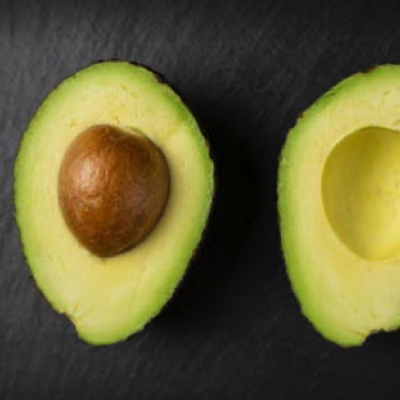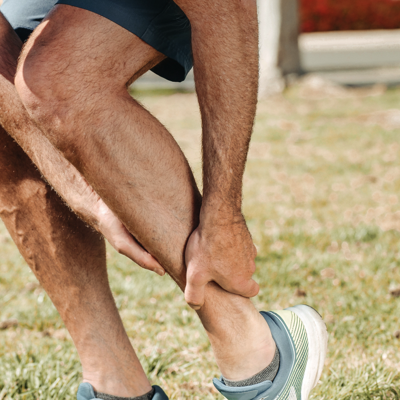In this blog, I would like to discuss the role of exercise in women approaching their menopause. Whilst strength training is often not adopted naturally by this population, arguably women entering the perimenopause phase of their life are the very people that need it most, therefore my focus is on strength training rather than cardio. Strength training should be at the top of the hierarchy of exercise for women heading into middle age as a key component of managing weight, maintaining muscle mass, ensuring good bone health and keeping the nervous system primed and in top condition. Of course cardio training should not be discarded, but it aught not to be the sole exercise focus. And as for HIIT? Well that probably isn’t the hit you thought it was.
What is the ‘perimenopause’?
The menopause is formally defined as the point at which a woman has not had a period for 12 months. The age of onset is typically between 45-55 years, but this is influenced by both inheritable traits and environmental / lifestyle factors.
The perimenopause, which is the period leading up to the menopause, typically lasts between two to eight years. During this time the menstrual cycle is disrupted as it starts to ‘wind down’, with ovulation becoming less frequent. Symptoms vary during peri menopause, but most women will experience at least some of these:
- Irregular menstrual cycle with a possible increase in PMS.
- Hot flushes
- Mood disturbances, often with an increase in anxiety and potentially depression
- Difficulty with memory
- Insomnia
- Weight gain (particularly around the abdomen)
- Joint aches
These changes are primarily caused by declining levels of oestrogen and progesterone as well as other hormones that are produced by the ovaries. These two hormones are involved with many systems in the body, and therefore as they decline the effects of perimenopause are noted in both physical and psychological adaptions.
How does exercise help?
As a woman’s body changes due to the reduction of key hormones, there are some implications for her health and functional fitness. But these implications can be influenced through exercise, even if prior to the perimenopause the woman did not exercise regularly. The onset of perimenopause might well be a good reason to start! Whilst strength training is the focus of this post (because it is often lacking in the middle aged woman’t training regime), it must be remember that cardiovascular training is also required. After all the best tones muscles ever are of limited value if your heart stops beating or you spend most of the day trying to catch your breath.
Toned muscles not BIG muscles
Healthy muscle tissue is about maintaining functional strength, not just about pure strength or weight lifter sized biceps and huge legs. It is important to understand the profound influence muscle tissue has on metabolism and therefore its role in weight management. Women tend to go into perimenopause with a lower overall muscle mass than similar aged men. Whilst there are biological drivers for this, much of this difference is that strength training does not feature in many women weekly workout. Therefore there is a lack of appropriate exercise stimulus.
All living tissue is metabolically active (burns calories), but muscle tissue is particularly so. Generally, if you have relatively more tones muscle mass, your resting– metabolic rate (how much energy you burn just to stay alive) is likely to be higher (this is a bit of a simplification, but the principle is correct). So it follows that an effective way to boost your metabolism is to maintain or build your toned muscle mass. This means that strength training should be a component of your weight-management programme. It is not the whole answer (you will never out train a rubbish diet!), but it is an increasingly important component with increasing age.
Let me dispel two common misconceptions about women and strength training. The first being that strength training will make women bulky. Whilst there is nothing wrong with being “bulky” if that is an look you favour, it won’t happen easily or by accident. It is possible for some biologically gifted women to put on significant muscle mass, for the vast majority it takes a lot of hard work and it is very unlikely that a woman who is middle aged or above and on a moderate calorie diet will significantly bulk up due to muscle growth from strength training.
Furthermore, the kind of strength training you would be doing is not the same as you would engage in for body building.
The second misconception is that older people can’t add muscle mass. That a steady decline in strength and function is just an inevitable consequence of ageing. This is similar to the fallacy that older women cannot add bone mineral density. Both are demonstrably incorrect. Even where it is very difficult to put on extra muscle, it is possible to retain muscle or, at the very least, slow the decline of muscle loss into old age. Any of which will greatly assist in maintaining functional strength. Additionally, a significant component of ‘strength’ has to do with training the nervous system. With an appropriately structured strength programme, you can get significantly stronger without adding significant muscle mass. The focus should be upon toning muscles rather than building their size.
Because of the biological changes a woman’s body goes through in later life, both muscle and bone become harder to build once post-menopausal. Starting before the onset of menopause therefore gives women the best chance of building strength that will be vital for a resilient older age. That being said, it’s never too late to start.
The heavy subject of weight
One of the most common issues women notice with perimenopause is an unwelcome gain in weight. It can be very frustrating to gain weight despite eating and exercising in much the same way as you had before. So what is going on? A natural consequence of normal ageing is for our metabolic rate to slow down (our basal calorific requirement reduces, which means we need less calories to keep our bodies systems functioning at tick over). This slowing effect can be more accentuated during perimenopause due to the speed at which hormonal changes take place. Secondly as we age, left unchecked, our muscle mass and muscle tone both reduce. Toned muscles burn more calories at rest than untoned and therefore this contributes further to the reduces requirement for calories. Again, left unchecked, there can be a reduction in physical activity. However this is a lifestyle and cultural choice. In fact the current trend in “younger old people” appears to be that they may be becoming more active with more available leisure time, which would be very helpful. Finally there is evidence that insulin sensitivity changes as part of a the overall change in hormonal landscape, if this applies then there will be an effect on moods and energy levels which could impact overall activity and therefore calorific burn. I would suggest it’s not helpful to get too hung up on this last consideration and frame it as an excuse for “inevitable weight gain”.
The fundamental reality of weight management holds true: to lose weight you have to be in a calorific deficit. If you are frequently in a calorific surplus you will put on weight in the form of body body fat.
What is to be done? If you were around your idea body weight before you started to enter perimenopause then a small reduction (adjustment) in calorie consumption will probably resolve the matter. However, if you are already overweight, then more work is needed. Firstly, it is likely that if you are obese then your muscles are not toned and your general level of fitness is sub-optimal. Focusing on an exercise regime to increase muscle tone will help maintain your basal calorific requirement and therefore reduce the amount of calorie cutting that is needed. Resistance training with light to medium weights (building to) a high number of repetitions will help you develop muscle tone. A happy coincidence being that tones muscles also greatly contribute to a better “body shape” which most people are pleased about! Post resistance training, the body continues to require more calories for longer (than other forms of exercise) which is another advantage.
Cardio exercise is also an important compliment to resistance training. Ideally long slow cardio sessions with a moderate level of increase in heart rate and respiration is ideal as this encourages your body to burn fat as energy. But long means 60 to 90 mins not 20mins and then eat cake!
What of HIIT (High Intensity Interval Training)? Well it won’t harm you, but unless you are already strong, lean and fit you probably won’t get the best from it. The reason I say that is you are probably not going to be fit enough to create a sufficiently high intensity and maintain it for the required time. It’s popularity stems from the fact that it is offered to people as a “shortcut” and a “time efficient” way to exercise.
Which neatly leads to my last point for the perimenopausal woman planning her fitness regime. There is no shortcut and there is no silver bullet. This of course is the reality of all training! What you can do is:
- SLIGHTLY reduce your calorific intake and look for SMALL but consistent reductions in weight over the months. The only exception to this is where there is a pressing medical need to lose weight fast, but in that instance your Doctor will have explained to you why you must lose weight and how much. Your Dietician will tell you how to do it and you will be carefully monitored and supervised. Out with of that you should only make very small cumulative reductions. DO NOT use a fad diet (Keto etc.) and DO NOT restrict a particular food group (unless told to do so by your Doctor). So “cutting carbs” is firstly not going to work in the mid term and secondly is a quick way into yo-yo dieting and feeling bad about your progress. You just need less calories.
- Improve your muscle tone and daily calorific demand from being active. The goal here is to try and maintain your basal metabolic rate as high as possible whilst then topping that up with as much cardio based activity as possible EVERY day. Don’t forget that walking up flights of stairs as briskly as you can will do infinitely more for you than pressing a button in an elevator.
Maintaining your skeleton
Another consequence of ageing is, left unchecked, a reduction in bone density. This is highly problematic as bones with low density are more prone to breaking. Women are at particular risk of developing low bone density. Firstly as a women enters perimenopause she will typically have a lower bone density than her male counterpart of similar age. This is due to women typically not participating in the type of sports / activities that promote bone density during their earlier life. But also because a woman will typically have smaller bones than a man. Osteopoenia (clinically low bone density) and osteoporosis are far more common in women than in men and the majority of older people presenting with hip fractures are female. As hormone levels decrease building bone density and maintaining bone density become more challenging. It is however possible to improve this situation and maintain / build bone density. Strength resistance training and weight bearing exercise are the key to doing this and therefore another reason to incorporate them into your weekly training plan. This is true for ageing men too, but more important (I would suggest) for women.
Holding your nervous system.
Often overlooked, but exercise stimulates and helps to maintain the health of your nervous system. In the context of perimenopause, the nervous system is of interest in some key areas, including functional strength, cognitive ability and mood.
Functional strength, balance, co-ordination all have as much to do with the nervous system as with the muscular skeletal system. In addition, exercise is absolutely essential for good mental health and cognitive functioning into old age. This isn’t just about ‘feel good’ hormones; it is also about the health of the nervous system itself.
Whilst we can debate the benefits of cardio training over strength in terms of its value to the perimenopausal woman, there really would be little disagreement that strength training is far superior for stimulating the nervous system. Using resistance training has a profoundly positive effect on the nervous system, effecting mood and cognition. All exercise will have a positive effect on mood; however, resistance training is effective not only in the management of depression and anxiety but also in the maintenance of cognitive functioning. In addition to basic strength work, consider adding these other elements: complex three-dimensional movement, novel movement patterns and physical challenges (think bootcamp type circuits) that are unfamiliar to you. This can be as simple as learning a new exercise or doing something in a different way, but ideally try and be more imaginative and create a bigger more multifaceted challenge to truly engage mind and core!
It’s a wrap…
So if there is one takeaway from this blog post it is that as women start to move into the pre-menopause and then menopause itself they should be encouraged out of the hit studio and into the weight room! Too often still today there feels like a gender and social barrier exists that stops many women from lifting weights… Despite the fact that it would be the most beneficial training protocol they could possible adopt! Health clubs, gyms, Personal Trainers as well as men and women need to change that… And it all starts one shoulder press at a time 😉



